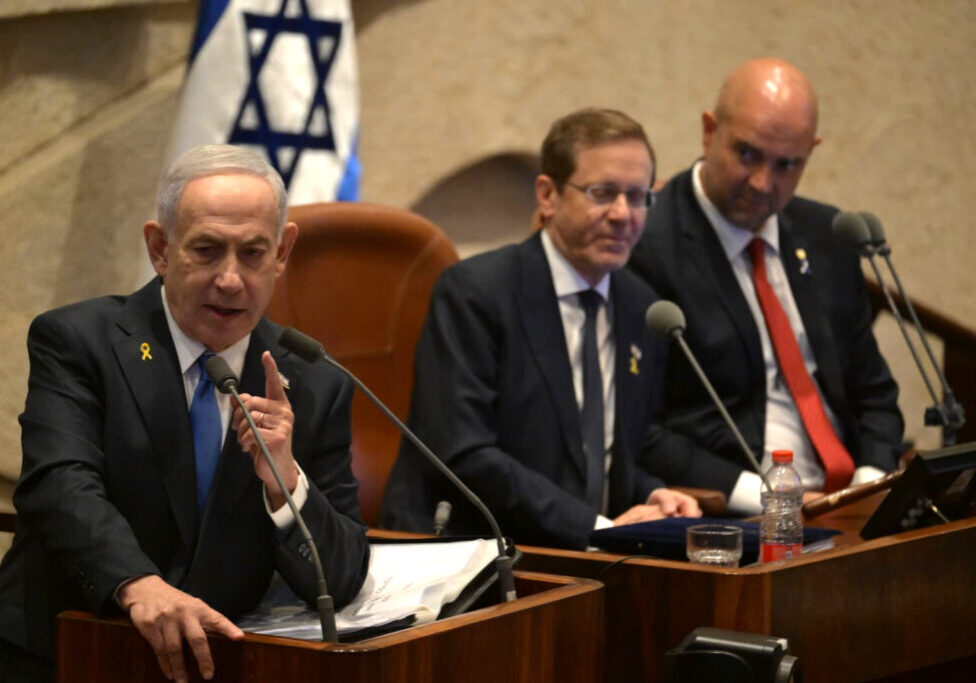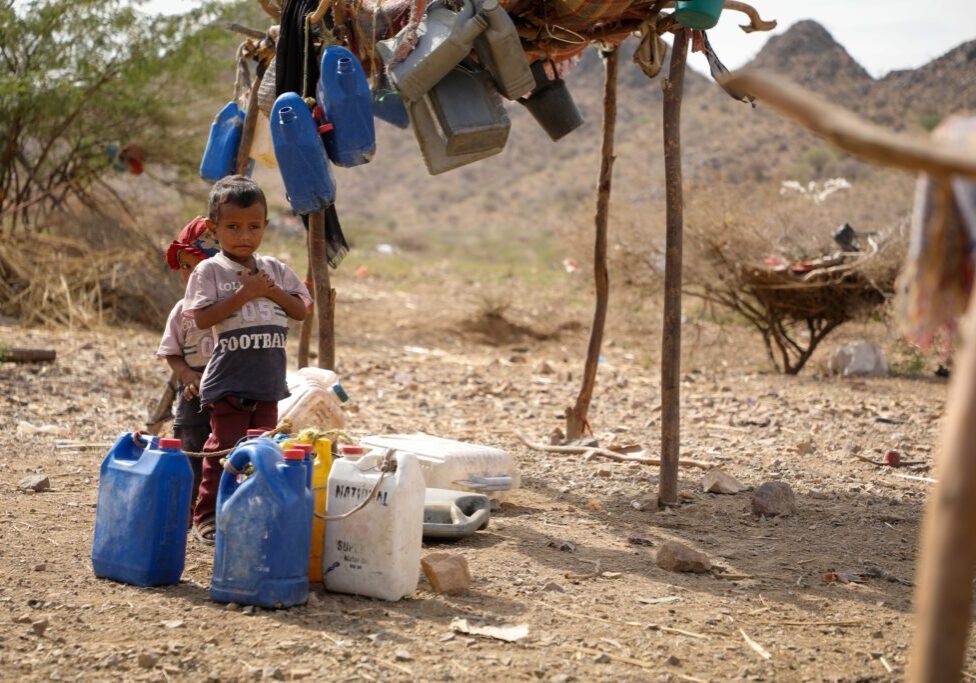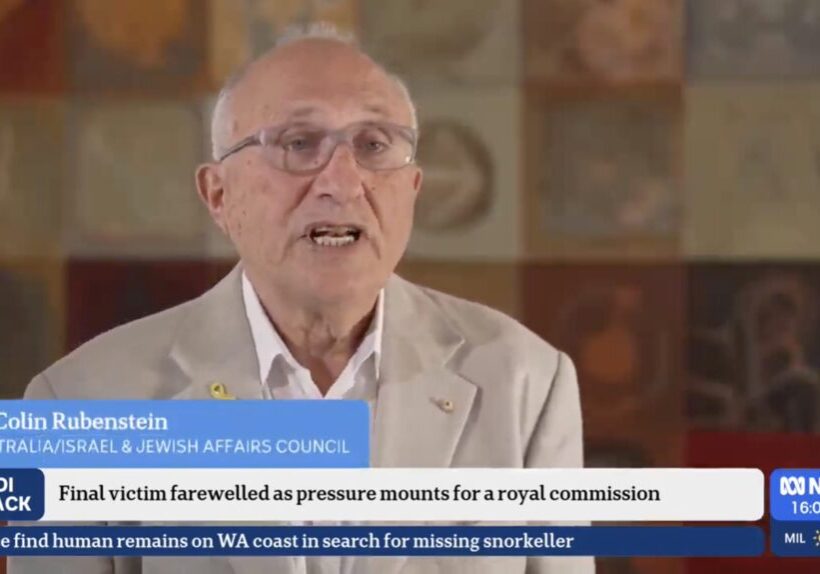FRESH AIR
Jordan Valley tale is all wet
September 18, 2020 | Ahron Shapiro

The Jordan River has never run dry, and neither does the wellspring of stories about Palestinian grievances against Israel in the Jordan Valley, such as an article written by Andra Jackson which was printed in the Age and Sydney Morning Herald on September 5 and appeared online with hyperlinks to material she felt would support her claims.
The subtext of the article was to undermine any claim that Palestinians would benefit from Israel suspending any plans to extend sovereignty in parts of the West Bank as part of the peace deal with the United Arab Emirates.
Jackson’s article is anything but original, following the boilerplate template characteristic of articles written by activist journalists aimed at promoting the Palestinian narrative.
True to form, Jackson’s reporting simply transcribes Palestinian allegations without any attempt to fact-check or even ask for a response from any Israeli government, military or civilian official.
Jackson relied solely on the testimony of Palestinian activist Rashed Khudairi from the Palestinian Jordan Valley town of Bardala, as well as its mayor, Ziyad Sawafta.
The claims in the article can be summarised as follows: Firstly, they claim that Israel steals water from the Jordan Valley for use by local Israeli settlements and their farmers, which has created a water shortage for Palestinians. Secondly, they claim that Israel blocks Palestinians from using land in the Jordan Valley through the use of IDF training and closed military zones and the creation of nature reserves. Combined, they allege, Israel has made Palestinian farming in the Jordan Valley untenable.
All these claims are either distortions or just plain false. Moreover, I have uncovered an important new academic article on agriculture in the Jordan Valley in an Environmental Science journal that makes the real situation in the region clear.
Contextual omissions
Jackson’s story omits context essential to the readers’ proper understanding of the subject matter including:
Governmental oversight: While she mentions that Bardala, the village she visits is in Area B, and is under Palestinian Authority administrative control (including PA water administration), she does not question any PA official on any issue affecting the town.
Peace offers: Jackson’s article reminds readers that the Oslo Accords envisioned an interim period of five years, but strongly implies its provisions expired after that time. This is not true – it contained no such expiration clauses.
While implying Israel trapped the Palestinians into unfavourable interim arrangements intended for only five years, she completely fails to explain that the Palestinians walked away from offers of a state on the equivalent of virtually 100% of the West Bank and Gaza (subject to land swaps) in 2000, at the end of that five year period and on at least two other occasions – in 2001 and 2008, each deal being more generous than the last.
Jackson’s article, claim by claim
Claim: “In May, the sign outside [Khudairi’s] home village of Bardala — a sign put up at the time of the 1990s Oslo accords to indicate that the village was part of Area B, with joint Israeli and Palestinian Authority control — was removed, with the same happening at other villages.”
Fact: Regardless of whatever preparations for extension of sovereignty took place in May, there has been no modification to the status of Bardala or any other village in the West Bank. Jackson’s article itself points out that as part of the normalisation agreement Israel made with the United Arab Emirates, any moves of this kind have been suspended, so what happened to signs in May is irrelevant.
Claim: “Before the 1967 Arab-Israeli war, 320,000 Palestinians lived in the Jordan Valley under Jordanian rule.”
Fact: This claim is factually wrong. Jordan’s most recent population census for the West Bank before the war, conducted in 1961, put the number of residents of the Jericho district at 63,980.
Meanwhile, Israel did a census of the West Bank in 1967 which showed there were 661,700 Palestinians in all of the West Bank, and only a few tens of thousands lived in the Jordan Valley. While it is true some people fled the area during the 1967 war, it is not plausible that 300,000 people all fled the Jordan Valley when the total numbers who left the whole West Bank are much less than that according to UN figures
Claim : “The valley’s agriculture was a major source of food for Palestinians and even exported to the Arab world. ‘Its dates were the best in the Arab world and it was rich in water resources,’ Khudairi says.”
Fact: The Jordan Valley today still exports large amounts of Palestinian produce. In particular, the Palestinians of the Jordan Valley are growing and exporting more dates than they ever had, and this is rising at an exponential rate, as the final part of this blog documents.
According to Ha’aretz, in 2019, the Palestinian Authority exported produce worth A$202 million. Much of that produce was grown in the Jordan Valley by producers such as Jericho-based Nakheel Palestine, which exports 70% of the dates it produces to Lebanon, Turkey, Russia, Qatar, the UAE, Indonesia, Malaysia, Singapore, the UK, the US, New Zealand and Norway.
Since 2012, the Palestinian Authority has enjoyed a lucrative free trade deal with the EU that grants it duty free, quota free access to EU markets for its agricultural products.
According to a 2015 paper by Palestinian agricultural engineering expert Professor Hassan Abu Qaoud, Palestinian farmers have increased profitability and yield by learning from the methods of Israeli date growers, and benefitted from Israeli innovation such as drip irrigation, and there is nothing really preventing Palestinian growers from increasing their exports, if desired.
Claim: “Today, fewer than 65,000 Palestinians live in the valley. Many left for Jordan or other Palestinian areas because they could no longer eke out a living under Israeli occupation, Khudairi says.”
Fact: According to data revealed in the recently published academic study summarised below, Palestinian farming has actually increased substantially in the Jordan Valley in recent years. The biggest challenge to Palestinian employment in the area, the study claims, is actually due to the expansion of Palestinian commercial farming, in line with global trends, that is displacing small farmers while at the same time shifting to seasonal crops. This study will be discussed in more detail at the end of this blog.
Claim: “B’tselem, the Israeli Information Centre for Human Rights in the Occupied Territories, points out that between them, the Israeli military and 11,000 Jewish Israeli settlers now control more than 80 per cent of land in the valley, denying access to Palestinians.”
Fact: Conflating land under use by settlements and that used by the military into one statistic is highly disingenuous and misleading, as the IDF’s closed military areas in the Jordan Valley are much larger than land being used by settlements.
The security imperative for a secure, closed military zone along the Jordan River – a national border – requires no explanation. Likewise, the IDF, like all armies, needs to be able to train soldiers in the area where they are likely to be needed in case of war. The open highlands above the Valley are therefore a practical space. This does impact land available to shepherds, although there are alternative places available to them to have their animals graze.
According to the BBC, the built-up areas of settlements take up “about 2%” of the West Bank, though agricultural fields are not included in that figure.
Claim: “The struggle for water is behind the flight of many Palestinians. Villagers used to go to the Jordan River to get their water until a giant barrier was erected blocking their access, with Israeli forces declaring the area a closed military zone. However, Israeli settlers farming in the closed area are using the water, Khudairi says.”
Fact: It is unclear from the story at what time access to the river was allegedly blocked, but it makes sense that before 1967, during the time both banks of the Jordan River were under Jordanian occupation, there was no border zone at the river and no need for a closed military area. As for the claim Israel is using the river water for irrigation, it is almost certainly just untrue. Despite persistent rumours to the contrary, Israeli farming in the Jordan Valley uses recycled wastewater, not river water. At the northern tip of the Jordan Valley, near Bardala, some Israeli farms utilise well water for specific crops. For more details, refer to the study cited at the end of this blog.
Claim: “The 1995 Oslo accords interim agreement, also known as Oslo II, accorded Israel unlimited access to water while Palestinians were allocated a fixed amount yet to be adhered to, Sawafta says.”
Fact: Prof. Haim Gvirtzman, a professor of hydrology at the Institute of Earth Sciences at the Hebrew University, a member of the Israel Water Authority Council and a long-time advisor of the Israel-PA Joint Water Committee, has written extensively how Israel provides the Palestinians with more water than was agreed upon in the Oslo agreements, not less, and that the real problem is that Palestinian Authority mismanages the water it receives.
Moreover, Jackson strongly implies that as result of Israeli policies, Palestinians have less access to less water than they did before 1967. This is not true in either absolute or per capita terms -in 1967, per capita water consumption amongst West Bank Palestinians stood at 93,000 litres of water per year. In 2006, despite a large increase in population, it stood at 129,000 litres per year, and has increased since then.
Meanwhile, Jackson mentions the alleged presence of a Mekorot well near Bardala, but omits the fact that Palestinians from Bardala have been splicing into the pipes and taking the water for free anyway, according to several articles published in the Israeli press in recent years, including this article from the Hebrew daily Yediot Ahronot from May 2019 [translated to English]:
In one of the operations by the Civil Administration for detecting water thefts in the village of Bardala, whose residents grow vegetables, about 30 splice points were found. According to data from the Administration, water thefts in the village are estimated at about 2.5 million cubic metres per year. The villagers receive about 3.5 million cubic metres per year, but demand five million. They cover the gap through water theft.
However, theft detection also helps only for a few months, because the Palestinians immediately find a way to reconnect… The Civil Administration says that in 2018, about 1,450 anti-theft enforcement activities were carried out, and that about 40% of the water intended for Jordan Valley residents is stolen.
For a better appreciation of the complexity of water supply for the West Bank and Gaza, including the role of the Palestinian Authority’s own water provision department, I’d peruse the World Bank’s 2018 report “Securing water for development in West Bank and Gaza”.
Claim: “Under the 1993 Oslo accords, Israel assumed civil administration of part of the Jordan Valley designated Area C for an intended five years. Its regulations forbid Palestinians, even with a land title, from building houses, schools, hospitals or clinics without a permit.”
Fact: Despite the strong implication that this is some sort of violation of property rights, you need a permit to build any of those things in any locality of most countries, including Australia, even with a land title.
Claim: “The Israeli government’s position is that until such time as Palestinians reach a final peace agreement with Israel, the provisions of these ‘interim’ agreements — now in place for 25 years — with regard to water and construction remain in force.”
Fact: The Oslo Accords granted concessions to the Palestinians on water and other issues that went far beyond what was available to them under the laws of military occupation. Indeed, this was a major incentive for the Palestinians to sign the Oslo Accords. The Oslo Accords included no expiration date, and not even the Palestinian Authority, which continues to make use of many of their provisions, argues they did – this is not merely an Israeli position.
Claim: “Since 1997, the Israeli Army has regularly demolished homes, farm sheds and tin-roofed Bedouin encampments. Abdul Rahim Bisharat, who lives further down the valley in the village of al-Hadidiya, had his house pulled down 32 times over two weeks, Khudairi says.”
Fact: Whether out of ignorance or malice, Jackson misleadingly blurs the lines between Palestinian and Bedouin communities without explanation. From a cultural, traditional and historical standpoint, these are entirely different peoples. Palestinian villages can be quite old and established, and Palestinian landowners hold titles to their land. Bedouin are a traditionally transient people and their encampments on state land are highly problematic from a standpoint of land use law. The demolitions of unauthorised Bedouin camps is a point of conflict by Bedouin of the area against the legal right of Israel to enforce the law.
Claim: “Sometimes, Khudairi adds, ‘[the IDF] haven’t actually done any training in [lands adjacent to Bardala marked as firing zones]. They place bombs in there and close it off … some Palestinians have actually died because of that’.
Fact: There is no proof that acts such as those contained in Khudairi’s allegation, which amounts to a blood libel against Israel, have ever taken place. The IDF does not plant bombs to harm civilians. Even the left-wing activist NGO Breaking the Silence, which collects testimony from thousands of Israeli soldiers about their dealings with Palestinians, does not possess any testimony to support this outrageous claim. In reality, during training, some shells that are fired do not explode. This is precisely why firing zones are marked off even during periods when training does not occur.
Claim: “Between three and five Palestinians a year are killed or injured by unexploded ordnance, he says.
Fact: While unfortunate, any such incidents are completely avoidable, since areas where live fire takes place are clearly marked. The online version of Jackson’s article inadvertently underlines this point as it links here to a B’tselem article about a Palestinian who knowingly placed himself in danger by entering an area where he was aware training had recently taken place. After entering the area, he accidentally set off an unexploded shell.
Claim: “Another feature of the Israeli occupation is declaring areas nature reserves and then burning them.”
Fact: This wild claim is completely unsubstantiated and no evidence exists to support it. The online version of Jackson’s article links to a story from the UK’s Independent discussing the fact that Israel had created new nature reserves in the West Bank but includes no mention of Israel deliberately setting nature reserves on fire.
Claim: “‘There is no way they will grow again, you can’t have the animals come and graze on them,’ Khudairi says. ‘You felt how devastating it was when the fires were in Australia, although it was a natural disaster in your case. In our case, it is a man-made disaster.’”
Fact: While Khudari’s claim that the nature reserve was burnt by Israel is unsubstantiated, his claim that the grazing fields will not grow back is false, as evidenced by Israeli fields bordering Gaza which have been targeted by flaming balloons launched by Palestinian arsonists over the past several summers yet do recover the following spring after winter rains.
Claim: “Olive groves have been destroyed by both Israeli soldiers and armed settlers.”
Fact: While criminal vandalism against Palestinian fields by the most radical settlers has been observed on occasion, the IDF only removes trees planted by Palestinians in the context of enforcing the law, such as groves which have been grown on land that doesn’t belong to those who planted them. It has also removed trees planted by Israelis under the same criteria. Moreover, West Bank Palestinians produced a record amount of olive products in 2019, from 10 million olive trees, meaning even if every Palestinian claim of vandalism against olive trees were verifiably accurate, it would still mean that less than one-tenth of one percent of all Palestinian olive trees had been affected.
The real plight of the Palestinian farmer in the Jordan Valley
Had Jackson gone to the trouble of investigating the claims made by Khudairi, she would have discovered that the narrative she was being fed is detached from the facts of the reality on the ground for the majority of the Jordan Valley.
Finding accurate and recent data about Palestinian agriculture in the Jordan Valley is admittedly somewhat challenging, certainly in English. The most trustworthy material I’ve seen can be found in academia, in the field of agricultural and environmental studies.
Earlier this year, a paper was published in the interdisciplinary journal of nature-society scholarship Environment and Planning E: Nature and Space by two French and one Israeli scientists – Julie Trottier from the Centre National de la Recherche Scientifique (CNRS), France, Nelly Leblond from the Universite Paul-Valery Montpellier, France and Yaakov Garb of Ben Gurion University of the Negev, Israel.
The paper, The political role of date palm trees in the Jordan Valley, reveals a treasure trove of information about what is really affecting traditional Palestinian farmers in the Jordan Valley.
First of all, Palestinian farming is growing, not shrinking, especially the lucrative date industry, which has gone from 25 cultivated hectares in 1999 to 1,584 hectares in 2016 – an increase of a jaw-dropping 6,236 percent in 17 years! Moreover, almost exactly half of those hectares of date trees were planted in desert that had not been cultivated previously.
According to the study, the biggest threat to traditional Palestinian sharecropper-style farming in the valley [akin to the farming discussed in Jackson’s article] is from the displacement caused, not by the “occupation” but by large-scale Palestinian commercial farming!
Moreover, the paper reveals, water isn’t really a problem for most Jordan Valley farmers in Israeli-controlled Area C. If they need more water for agriculture, Palestinians simply dig another unlicensed well, a practice which Israeli authorities essentially ignore. (Ironically, according to the study, the Palestinian Authority blocks unauthorised well-digging in parts of the Jordan Valley in Area A, under its security control.)
In any case, according to the paper – backed up by maps and statistics – Israeli farmers in most of the Jordan Valley don’t use locally sourced fresh water to irrigate their crops at all. Instead, they use recycled wastewater piped from sewage treatment plants in Jerusalem, Ma’ale Adumim and other cities and stored in huge reservoirs.
The paper reads:
A first distinction needs to be made between Israeli controlled water and Palestinian controlled water. Israeli farmers of date palms rely on wastewater managed through a public property regime whereby the Israeli Water Authority carries wastewater over long distances. The reservoirs and wastewater treatment plants they use in the Jordan Valley are represented in Map 1. The settlements of Kalia, Bet Arava, and Na’ama use wastewater originating from Maale Adumim, Bethlehem, and Jerusalem and collected in treatment plants next to their plantations which they use as reservoirs. Israeli farmers in the Jordan Valley access treated wastewater that is managed by Israel as a public good according to rules it sets even though these Israeli farms are located in the West Bank.
Palestinian farmers have long relied on springs managed by common property regimes. These have either dried up in recent years or have become much less reliable. Palestinian farmers have also long relied on wells. These may be licensed or not.
About those wells:
Jericho farmland straddles A and C areas. Drilling an unlicensed well in area C here is simple as, in past years, Israeli authorities have turned a blind eye to such activity. However, drilling an unlicensed well in area A of Jericho is far more difficult.
The paper expresses concern – not that Palestinian farming in the Jordan Valley is shrinking, but quite the opposite – that large, commercial Palestinian date farming is growing unsustainably and in directions that undermine the livelihood of the individual Palestinian farmer. From an environmental standpoint, it also sees the rapidly expanding commercial date industry is environmentally unsustainable for Palestinians because they generally use high-saline well water instead of wastewater.
As the paper says:
When planted on desert land, date palm trees do not displace sharecroppers directly, but they create a demand for water where none had existed before. A total of 7754 dunums of date palm trees planted by Palestinian farmers on desert land have generated a new demand of 10.5 million cubic meters/year. In the meantime, other date palm trees had replaced other crops on a total of 7833 Palestinian farmed dunums, many of which had never hosted banana trees, the notoriously water hungry crop in the area. Clearly, the two-thirds of previously used water that could now be allocated to other crops has not materialized.
Dates grown in the desert have prevented this. Developing a more water efficient crop ultimately increased water demand.
The paper also explains that the choice by Palestinian commercial farms to grow dates has made it harder for Palestinians of the Jordan Valley to secure year-round employment because the date crop harvest is seasonal in nature, which was not true of previous crops.
Tags: Israel, Jordan Valley, Palestinians
RELATED ARTICLES

Parameters of a Royal Commission will be crucial: Joel Burnie on Sky News






















